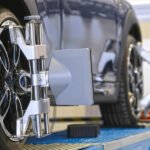

A Comprehensive Comparison Between Leather and Fabric Car Seats
Car interiors have evolved over the years, providing drivers and passengers with a range of choices when it comes to seating materials. Two popular options that dominate the market are leather and fabric seats. These materials differ not only in their appearance but also in their feel, maintenance, and overall suitability for various driving conditions.
Leather, a natural material derived from animal hides, reigns supreme in luxury and high-performance vehicles. Its supple texture and premium look add a touch of class, while its durability ensures long-lasting wear. Fabric, on the other hand, is the workhorse of the automotive world, found in everything from budget-friendly sedans to family SUVs. Its affordability and wide variety of textures and colors make it a versatile choice.
Suitability of Leather Seats:
Leather seats are renowned for their durability and resistance to stains, making them an excellent choice for those who prioritize a luxurious and low-maintenance interior. Leather is also less likely to absorb odors, contributing to a fresher driving experience. Additionally, leather seats are generally cooler in hot weather, providing comfort during warmer seasons.
Advantages of Leather Seats: In terms of advantages, leather seats boast an unmatched aesthetic appeal that adds a touch of sophistication to any car interior. Furthermore, they age gracefully, developing a rich patina over time, enhancing the overall character of the vehicle. The ease of cleaning spills and crumbs off leather surfaces is an additional practical advantage, making them an ideal choice for individuals with a busy lifestyle.
Suitability of Fabric Seats:
Fabric seats, while lacking the opulent appearance of leather, offer their own set of advantages. They are particularly suitable for families with children and pets due to their comfort and resistance to scratches. Fabric seats also provide better insulation in colder weather, ensuring a cozier ride during the winter months.
Advantages of Fabric Seats: The primary advantage of fabric seats lies in their comfort, especially during long drives. The softer texture and breathability of fabric make them a preferred choice for those who prioritize a cozy and relaxed driving experience. Fabric seats are also less prone to becoming uncomfortably hot in high temperatures, providing a more enjoyable ride during the summer months.
Downside of Leather Seats: Despite their numerous advantages, leather seats have a downside. One notable drawback is their tendency to heat up in direct sunlight, potentially causing discomfort during hot weather. Additionally, leather requires regular conditioning to prevent cracking and maintain its luxurious appearance, which can be time-consuming for some car owners.
Downside of Fabric Seats:
Fabric seats, while comfortable, are more susceptible to stains and can absorb odors over time. This requires more diligent cleaning and maintenance, which may be a consideration for those with a preference for low-maintenance interiors.
Conclusion:
The choice between leather and fabric seats ultimately comes down to personal preference, lifestyle, and priorities. If you prioritize luxury, comfort, and long-lasting wear, leather might be your perfect match. However, if affordability, family-friendliness, and breathability are your top concerns, fabric offers a practical and comfortable solution.
Add a comment Cancel reply
Categories
- Car Gadgets (17)
- Car News (33)
- Car Reviews (43)
- Car Wars (7)
- Mechanicals (32)
- Uncategorized (2)
Recent Posts
About us

Popular Tags
Related posts


The New Car Smell: What you need to Know

The Drawbacks of Stretched Sedans: Cruising in Comfort or Compromising Convenience?








